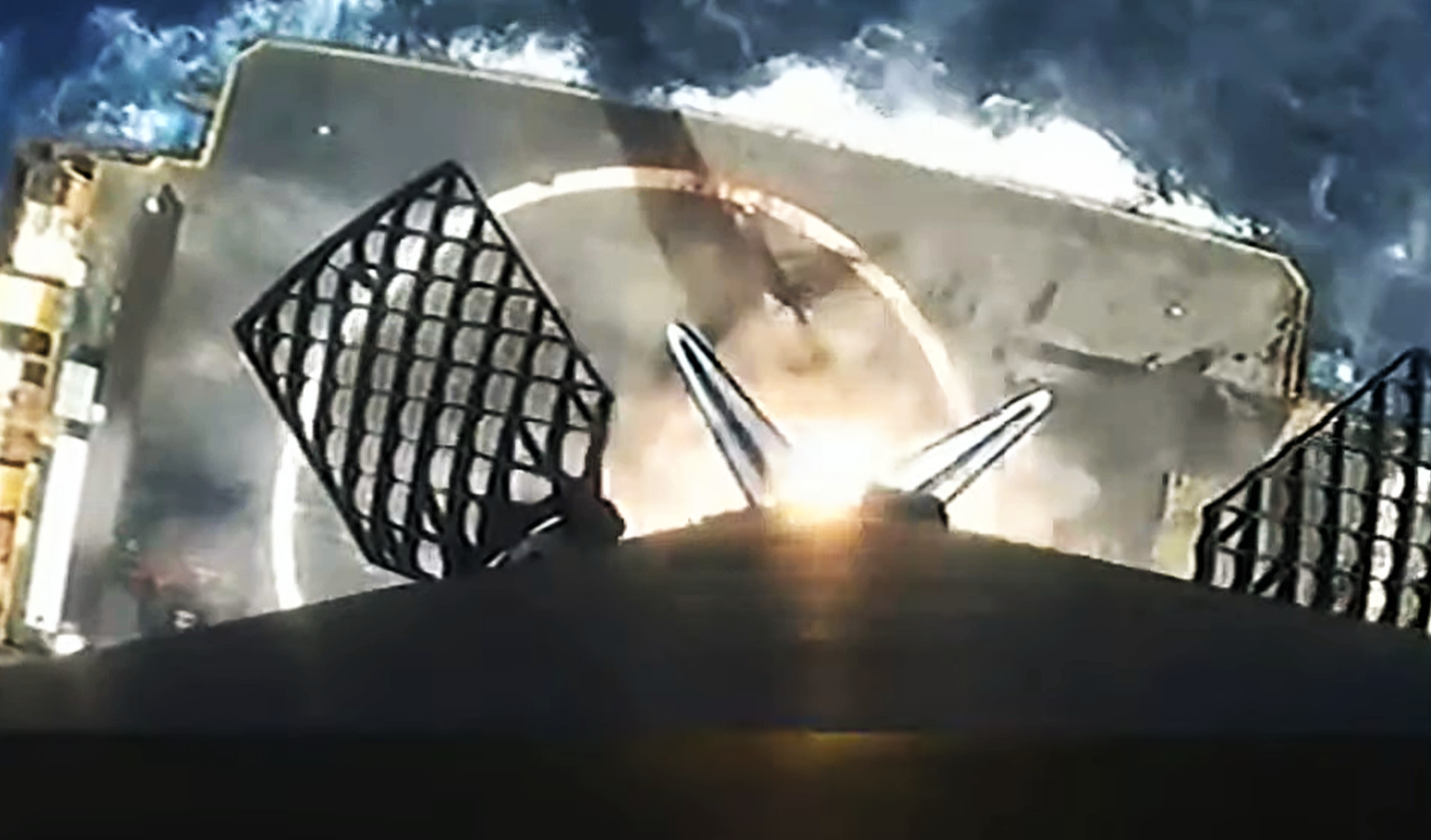

News
SpaceX Starlink launch offers rare live view of Falcon 9 booster landing
Update: SpaceX has aced the first its tenth launch of 2021 and 23rd operational Starlink launch while simultaneously offering an uninterrupted live view of a Falcon 9 booster landing from the rocket’s onboard camera for the first time in months.
While SpaceX’s official webcast got off to a rough start with no onboard camera views throughout the entirety of ascent and beginning of booster descent, whatever was causing the camera outage was fixed around seven minutes after liftoff, returning live onboard views after the first outage of its kind in years. For whatever reason, Falcon 9 booster B1058 and the satellite link it uses to transmit telemetry and live camera views behaved almost perfectly for the next few minutes, providing a nearly uninterrupted two-minute-long view of the rocket’s seventh successful landing.
For unknown reasons, those uninterrupted onboard views may have still been unusual but were substantially less rare a few years ago. Over the last several-dozen SpaceX Falcon launches, they’ve effectively faded into a once-in-a-blue-moon occurrence. Regardless, Falcon 9 B1058 has become the second SpaceX booster ever to fly twice in less than four weeks, falling just four hours short of setting a new turnaround record for reusable rockets.
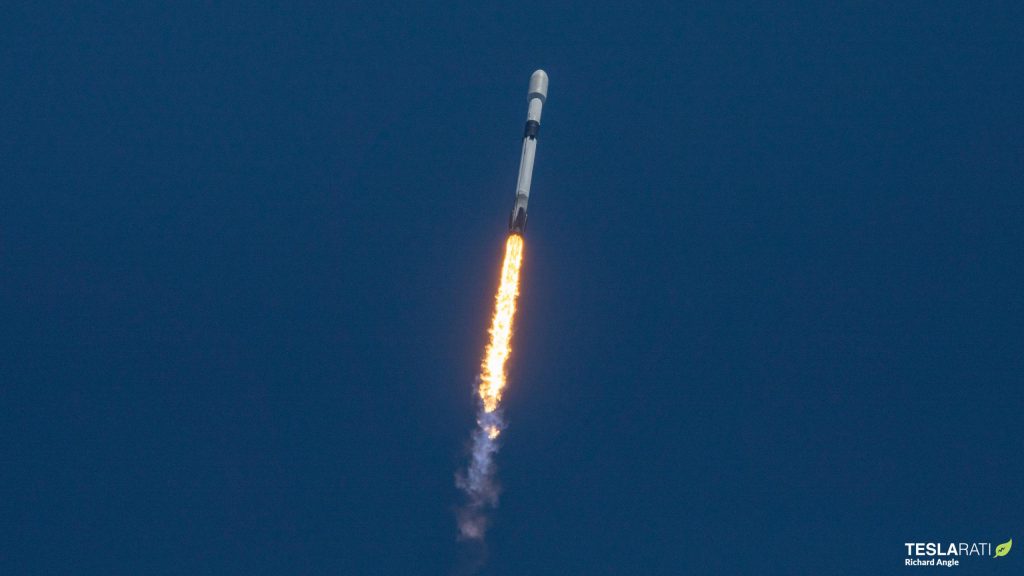
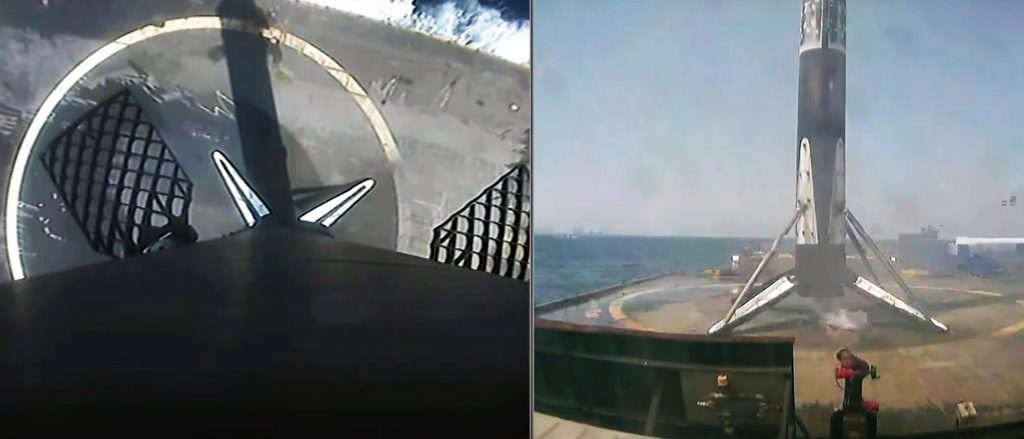
45 minutes after liftoff, Falcon 9’s expendable second stage relit for a brief one-second burn. Around 20 minutes later, after spinning itself end over end, the rocket commanded the deployment of its batch of 60 operational Starlink satellites, sending the spacecraft on their way to gradually spread apart, deploy solar arrays, and begin propelling themselves to their final orbits. With Starlink-23 complete, SpaceX has successfully launched 10 orbital missions in the first 95 days of 2021, a cadence that would equate to almost 40 launches this calendar year if SpaceX can sustain it.
SpaceX is scheduled to attempt its tenth orbital launch of 2021 – also Falcon 9’s two-dozenth dedicated Starlink mission – as early as 12:34 pm EDT (UTC-4) on Wednesday, April 7th.
Known as Starlink-23 SpaceX’s 23rd dedicated launch of operational Starlink satellites and 24th operational launch overall will also mark the first time a Falcon 9 rocket lifts off under daylight since January 24th – a welcome reprieve after half a dozen late-night or early-morning Starlink launches. SpaceX will offer an official webcast of the launch as usual, with coverage beginning around 12:20 pm at the links below.
In what has rapidly become the company’s default, Starlink-23 will also continue to establish that SpaceX is on track for a record-breaking number of launches this year.
Encapsulating the mission’s stack of 60 Starlink v1.0 satellites to protect them from the environment and the aerothermal stresses of launch, one of Starlink-23’s two fairing halves will be flying for the fourth time – the second of its kind for rocket fairing reusability. The other fairing half supported one other Starlink mission prior to Wednesday’s launch, making it SpaceX’s 15th launch – and Falcon 9’s fifth consecutive launch – with a fully flight-proven payload fairing since the company first began reusing the carbon composite nosecones in November 2019.
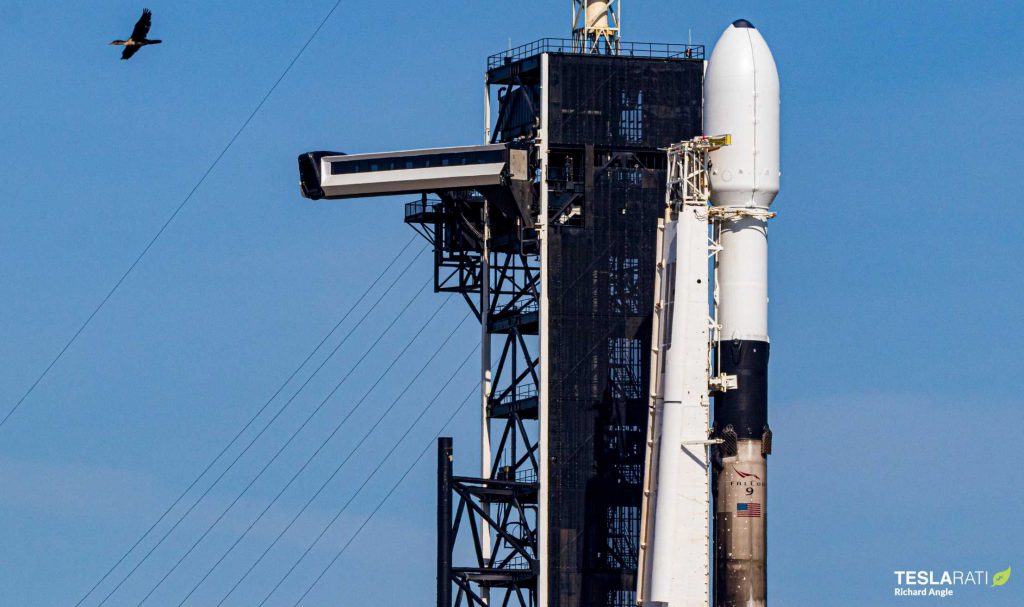
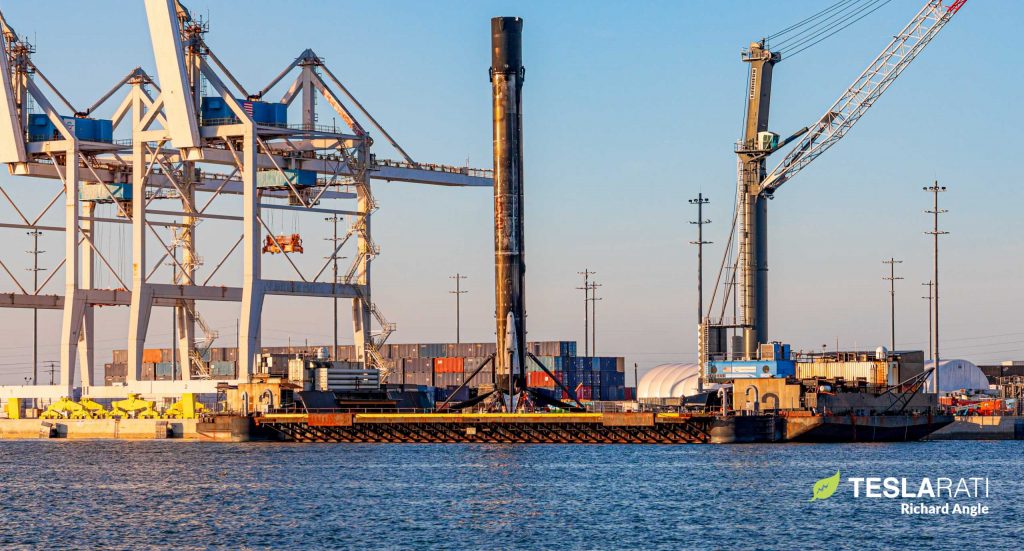
Beneath Starlink-23’s flight-proven fairing and expendable second stage, SpaceX has assigned Falcon 9 booster B1058 to the launch. Barring delays, the historic rocket – famous for debuting in May 2020 on SpaceX’s inaugural ‘Demo-2’ astronaut launch – will narrowly miss beating SpaceX’s Falcon booster turnaround record (27d 4h) by a little over four hours. In other words, Starlink-23 will mark the second time in spaceflight history that a rocket booster has flown twice in less than four weeks and achieve that feat just two months after Falcon 9 B1060 became the first to do so.
Beyond individual feats of rocket reuse, Starlink-23 will also be SpaceX’s 10th orbital launch in three months – just 95 days into the new year. On average, that means that the company and its Falcon rockets are on track to complete nearly 40 orbital launches (~39) in 2021 – shy of CEO Elon Musk’s ambitious 48-launch target but still a major achievement if SpaceX can sustain its first-quarter cadence.
After Starlink-23, SpaceX is expected to enter a rare two-week stand-down as it turns its focus to Crew-2, Crew Dragon’s second operational astronaut launch. That mission is scheduled to launch no earlier than (NET) April 22nd.
Elon Musk
Tesla reveals it is using AI to make factories more sustainable: here’s how
Tesla is using AI in its Gigafactory Nevada factory to improve HVAC efficiency.

Tesla has revealed in its Extended Impact Report for 2024 that it is using Artificial Intelligence (AI) to enable its factories to be more sustainable. One example it used was its achievement of managing “the majority of the HVAC infrastructure at Gigafactory Nevada is now AI-controlled” last year.
In a commitment to becoming more efficient and making its production as eco-friendly as possible, Tesla has been working for years to find solutions to reduce energy consumption in its factories.
For example, in 2023, Tesla implemented optimization controls in the plastics and paint shops located at Gigafactory Texas, which increased the efficiency of natural gas consumption. Tesla plans to phase out natural gas use across its factories eventually, but for now, it prioritizes work to reduce emissions from that energy source specifically.
It also uses Hygrometric Control Logic for Air Handling Units at Giafactory Berlin, resulting in 17,000 MWh in energy savings each year. At Gigafactory Nevada, Tesla saves 9.5 GWh of energy through the use of N-Methylpyrrolidone refineries when extracting critical raw material.
Perhaps the most interesting way Tesla is conserving energy is through the use of AI at Gigafactory Nevada, as it describes its use of AI to reduce energy demand:
“In 2023, AI Control for HVAC was expanded from Nevada and Texas to now include our Berlin-Brandenburg and Fremont factories. AI Control policy enables HVAC systems within each factory to work together to process sensor data, model factory dynamics, and apply control actions that safely minimize the energy required to support production. In 2024, this system achieved two milestones: the majority of HVAC infrastructure at Gigafactory Nevada is now AI-controlled, reducing fan and thermal energy demand; and the AI algorithm was extended to manage entire chiller plants, creating a closed-loop control system that optimizes both chilled water consumption and the energy required for its generation, all while maintaining factory conditions.”
Tesla utilizes AI Control “primarily on systems that heat or cool critical factory production spaces and equipment.” AI Control communicates with the preexisting standard control logic of each system, and any issues can be resolved by quickly reverting back to standard control. There were none in 2024.
Tesla says that it is utilizing AI to drive impact at its factories, and it has proven to be a valuable tool in reducing energy consumption at one of its facilities.
Elon Musk
Tesla analysts believe Musk and Trump feud will pass
Tesla CEO Elon Musk and U.S. President Donald Trump’s feud shall pass, several bulls say.

Tesla analysts are breaking down the current feud between CEO Elon Musk and U.S. President Donald Trump, as the two continue to disagree on the “Big Beautiful Bill” and its impact on the country’s national debt.
Musk, who headed the Department of Government Efficiency (DOGE) under the Trump Administration, left his post in May. Soon thereafter, he and President Trump entered a very public and verbal disagreement, where things turned sour. They reconciled to an extent, and things seemed to be in the past.
However, the second disagreement between the two started on Monday, as Musk continued to push back on the “Big Beautiful Bill” that the Trump administration is attempting to sign into law. It would, by Musk’s estimation, increase spending and reverse the work DOGE did to trim the deficit.
Every member of Congress who campaigned on reducing government spending and then immediately voted for the biggest debt increase in history should hang their head in shame!
And they will lose their primary next year if it is the last thing I do on this Earth.
— Elon Musk (@elonmusk) June 30, 2025
President Trump has hinted that DOGE could be “the monster” that “eats Elon,” threatening to end the subsidies that SpaceX and Tesla receive. Musk has not been opposed to ending government subsidies for companies, including his own, as long as they are all abolished.
How Tesla could benefit from the ‘Big Beautiful Bill’ that axes EV subsidies
Despite this contentious back-and-forth between the two, analysts are sharing their opinions now, and a few of the more bullish Tesla observers are convinced that this feud will pass, Trump and Musk will resolve their differences as they have before, and things will return to normal.
ARK Invest’s Cathie Wood said this morning that the feud between Musk and Trump is another example of “this too shall pass:”
BREAKING: CATHIE WOOD SAYS — ELON AND TRUMP FEUD “WILL PASS” 👀 $TSLA
She remains bullish ! pic.twitter.com/w5rW2gfCkx
— TheSonOfWalkley (@TheSonOfWalkley) July 1, 2025
Additionally, Wedbush’s Dan Ives, in a note to investors this morning, said that the situation “will settle:”
“We believe this situation will settle and at the end of the day Musk needs Trump and Trump needs Musk given the AI Arms Race going on between the US and China. The jabs between Musk and Trump will continue as the Budget rolls through Congress but Tesla investors want Musk to focus on driving Tesla and stop this political angle…which has turned into a life of its own in a roller coaster ride since the November elections.”
Tesla shares are down about 5 percent at 3:10 p.m. on the East Coast.
Elon Musk
Tesla scrambles after Musk sidekick exit, CEO takes over sales
Tesla CEO Elon Musk is reportedly overseeing sales in North America and Europe, Bloomberg reports.

Tesla scrambled its executives around following the exit of CEO Elon Musk’s sidekick last week, Omead Afshar. Afshar was relieved of his duties as Head of Sales for both North America and Europe.
Bloomberg is reporting that Musk is now overseeing both regions for sales, according to sources familiar with the matter. Afshar left the company last week, likely due to slow sales in both markets, ending a seven-year term with the electric automaker.
Tesla’s Omead Afshar, known as Elon Musk’s right-hand man, leaves company: reports
Afshar was promoted to the role late last year as Musk was becoming more involved in the road to the White House with President Donald Trump.
Afshar, whose LinkedIn account stated he was working within the “Office of the CEO,” was known as Musk’s right-hand man for years.
Additionally, Tom Zhu, currently the Senior Vice President of Automotive at Tesla, will oversee sales in Asia, according to the report.
It is a scramble by Tesla to get the company’s proven executives over the pain points the automaker has found halfway through the year. Sales are looking to be close to the 1.8 million vehicles the company delivered in both of the past two years.
Tesla is pivoting to pay more attention to the struggling automotive sales that it has felt over the past six months. Although it is still performing well and is the best-selling EV maker by a long way, it is struggling to find growth despite redesigning its vehicles and launching new tech and improvements within them.
The company is also looking to focus more on its deployment of autonomous tech, especially as it recently launched its Robotaxi platform in Austin just over a week ago.
However, while this is the long-term catalyst for Tesla, sales still need some work, and it appears the company’s strategy is to put its biggest guns on its biggest problems.
-

 Elon Musk1 day ago
Elon Musk1 day agoTesla investors will be shocked by Jim Cramer’s latest assessment
-

 News6 days ago
News6 days agoTesla Robotaxi’s biggest challenge seems to be this one thing
-

 News2 weeks ago
News2 weeks agoTesla’s Grok integration will be more realistic with this cool feature
-

 Elon Musk2 weeks ago
Elon Musk2 weeks agoElon Musk slams Bloomberg’s shocking xAI cash burn claims
-

 News2 weeks ago
News2 weeks agoTesla China roars back with highest vehicle registrations this Q2 so far
-

 News2 weeks ago
News2 weeks agoTexas lawmakers urge Tesla to delay Austin robotaxi launch to September
-

 News2 weeks ago
News2 weeks agoTesla dominates Cars.com’s Made in America Index with clean sweep
-

 Elon Musk1 week ago
Elon Musk1 week agoFirst Look at Tesla’s Robotaxi App: features, design, and more




















